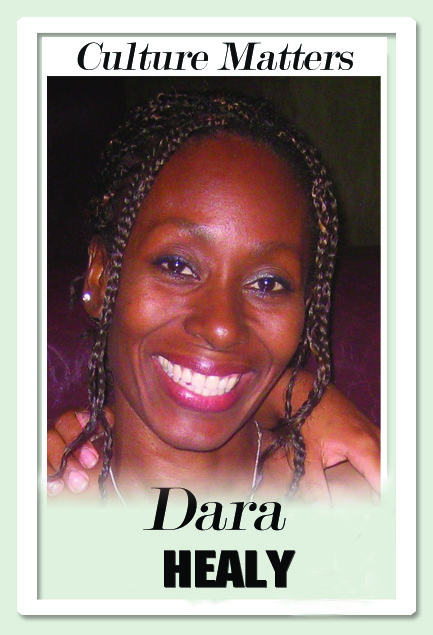Pour libation for our silk cotton tree

Culture Matters
“Kongo oral traditions stress rituals of medicine and healing, good luck, love and protection charms, dance societies, cosmic signs, masks and masquerades, the power of cemeteries and trees garlanded with bottle for protecting people through invocation of the dead.”
– Dr Hollis Liverpool, Rituals of Power and Rebellion
I STARED at the message on my phone. The silk cotton tree in Tobago had fallen. Did I panic? Yes, a bit. I held my breath as memories of our group dancing and pouring libation at the roots of the tree played in my mind’s eye. We were celebrating our ancestors and rejoicing in the thought that at least in the silk cotton tree they had a portal through which they could escape the dehumanisation of enslavement.
I agree with the Tobagonians. The tree famous for the ill-fated flight of Gang Gang Sarah has fallen. We should all be concerned about what happens next.
In the meantime, we can stop referring to Gang Gang Sarah as a witch. It is a simplistic term, shrouded in racist, colonial notions of African spirituality. Further, it does not tell the entire story. The term Gang Gang derives from the Kikongo word
nganga meaning “a spiritual healer, diviner, and mediator who draws power...from messengers from the spirit world.”
In his book African Survivals in Trinidad and Tobago, Dr JD Elder makes a link between the African peoples who came and where they settled in this country. Radas in Belmont, Kromanti in Vance River, Point Fortin; Hausa in Princes Town, Yoruba in Morvant, Diego Martin and elsewhere, and Congo in Tobago. Here, places specifically mentioned by Elder include Charlotteville, Pembroke, Caratal and Culloden.
This latter is the site of the famous silk cotton tree that Gang Gang Sarah climbed to head back home to Africa after her beloved husband passed into the ancestral realm. This woman, called Sarah by her enslavers, may have well been a respected healer from her Congo community from which she was taken. But not enough is said about this part of her story.
Apart from the distrust and fear of African spirituality during enslavement, negative interpretations of someone who was a
nganga would have also come from within the African community itself.
Prof Maureen Warner-Lewis documents that there existed some rivalry between Yoruba and Congo peoples who came to TT. This stemmed from the apparent boastfulness of the Congo over their powerful connection to the ancestral and spiritual realms. These complex sociocultural relationships would have been further muddied by the inherent contempt that Christian religions had (have?) for African spirituality.
Perhaps we are the fortunate ones. Today we do not need to hide the spiritual aspects of our ancestry, although many still do. Today the
nganga is teaching us. For a time she resisted salt, rooted in her African food traditions that no doubt favoured palm oil, pepper and plenty seasoning.
In his quest for reparations for our region, Prof Hilary Beckles has been vocal in his condemnation of our turbulent legacy of food. The Caribbean region has been described as the “diabetic, hypertensive capital of the world...The legacies of an enforced diet of sugar and salt to which the people of the region are now addicted are a direct consequence of slavery and colonisation.”
The third part of Ma Sarah’s story lies in the fact that she wanted to fly back home to Africa. JD Elder documented the story of Ma Rose, who, after attacking a cruel enslaver jumped off the cliffs in Charlotteville rather than face more torture. There are whispers that Ma appeared to be flying.
Elder spoke often about the importance of African peoples in this part of the world maintaining contact with their “ethnic roots.” His lament as far back as the 80s about limited contact between Africa and the Caribbean remains true. Is this the lesson of Ma Rose, Sarah and others who tried to take their spirits back to where they feel at home? Is it that we have not done enough to embrace those rituals of which Sarah was so proud, and which are still misunderstood?
I am grateful to have danced in a place that protected our African ancestors. The silk cotton tree in Culloden has fallen. Whatever is coming, let us be brave enough to do our rituals in the open. Let us dance, sing and pour libation. The spirits of the ancestors who sheltered there will remember us kindly. They will help us to face what comes next.
Dara E Healy is a performance artist, communications specialist and founder of the NGO, the Indigenous Creative Arts Network – ICAN


Comments
"Pour libation for our silk cotton tree"